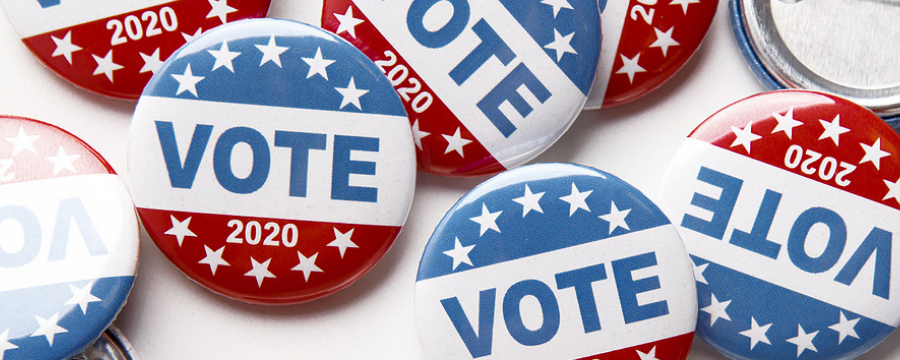

Provocateur:
If you think 2020 has already been an eventful year, you haven’t seen anything yet. Especially for political marketers, 2020 is just getting started—and nothing has been decided yet.
Going into these final weeks, everything hinges on whether candidates and causes are able to reach the right segments with the right messages at the right time—and that requires a kind of real-time insight that many marketers have never managed before.
Now more than ever, elections cannot be won by campaigns that view constituents in terms of Republican or Democrat alone. Diverse voter populations have emerged, comprised of smaller factions across the left and right. If a candidate wants to win, they must know the values and motivations driving voters’ choices.
Elections are won by the candidates and campaigns that can connect with and rally voters based on their personal values, beliefs, and viewpoints. Let’s look at two examples—one national, one local—of the kinds of insights that will make or break candidates and causes over the next few weeks.
BLM: Understanding the voters behind a movement
Black Lives Matters is a force to be reckoned with going into the 2020 election. Resonate analysts recently took a real-time look at the motivations driving the Black Lives Matter online audience, which is composed of voters from all walks of life. BLM represents a massive group of voters who firmly believe their elected officials should actively address how police interact with and treat Black Americans. There are voters within this audience of roughly 102 million that political marketers must understand in order to win.
What immediately stands out about BLM voters is that, when they are compared to the average U.S. voter, they are 113 percent more likely to be motivated by obeying laws and fulfilling obligations and 73 percent more likely to avoid upsetting or harming other people.
The reality is that our data doesn’t paint a picture of a crowd that wants to burn the system down or eradicate our nation’s laws in favor of anarchy zones. Instead, we see voters who are 44 percent more likely to accept those who are different and who are psychologically driven by trust and respect from others, as well as valuing the freedom to express individuality.
In the policy arena, we see a pro-regulation audience that believes strongly in making public investments in our shared services and infrastructures, including healthcare programs like Medicaid, public transportation like city busses, funding for charter schools, the arts and sciences, and even the size and scope of the U.S. military. On the ideological spectrum, this audience is 41 percent Democrat and equal parts Republican and Independent at 27 percent. Third-party identifiers encompass the remaining segment.
In other words, if you think you already know BLM voters based on traditional polling and pundits, you may be surprised. And it’s the campaigns that recognize this audience’s nuances that will emerge victorious on November 3.
Texas Moms: Microsegmentation by congressional district
Of course, not every campaign is operating at the national level. But no matter how local your campaign, you’ll find there’s power in microsegmentation going into November. The key is finding persuadable audiences and speaking to their values and concerns.
Consider mothers with kids under 18 who live in Texas Congressional District 12, for example. To show the power of understanding voter segments according to their values and real-time concerns, Resonate’s analysts recently delved into this audience as an example of how deeper insights can lead to more-resonant campaigns.
When it comes to personal values, these Texas moms are 65 percent more likely to value safety and 46 percent more likely to value caring for family and friends when it comes to making voting decisions. Likewise, these women are more than 131 percent more likely to be driven by faith than the average American. These are core values that campaigns must speak to in their messaging.
In terms of political views, we find that these moms represent a true battleground audience, at 36 percent Democrat, 32 percent Republican, and 18 percent Independent. These women are 37 percent more likely to care about healthcare policy and 36 percent more likely to care about education policy when it comes to their candidates.
When it comes to current events, 41 percent of this audience is still persuadable on who to vote for in the presidential race, and they’re also shockingly optimistic that life will return to normal in just two to three months. They are, however, particularly concerned about the economic impact of COVID-19. These insights are precisely the type that campaigns need to be leveraging in these volatile times, as Election Day draws ever nearer.
Real-time wins
Ultimately, today’s political marketers are being asked to navigate uncharted waters. If your voter models are built from static data, you’re dead in the water. But if you understand how national changes in sentiment are affecting statewide, congressional district, and local elections in real time, you can make tactical plans that take current events into account and define tactics with a granularity that hasn’t been possible in past elections.
Candidates and campaigns need to engage voters based on the current events and key issues that are shaping their worlds right now. They must understand how highly divisive issues such as the pandemic, BLM, and climate change are shifting voting intentions among the key audiences that will decide elections this year. To do this, they must seek out data-driven segments that recognize the unique human elements that influence voting decisions.
About the Author
Kristina Emminger is director of sales strategy and development at Resonate, which provides AI-driven consumer data and intelligence. Emminger is an expert in political- and advocacy-related marketing, and has advised Resonate clients on strategy and solutions in those areas for nearly 10 years.








